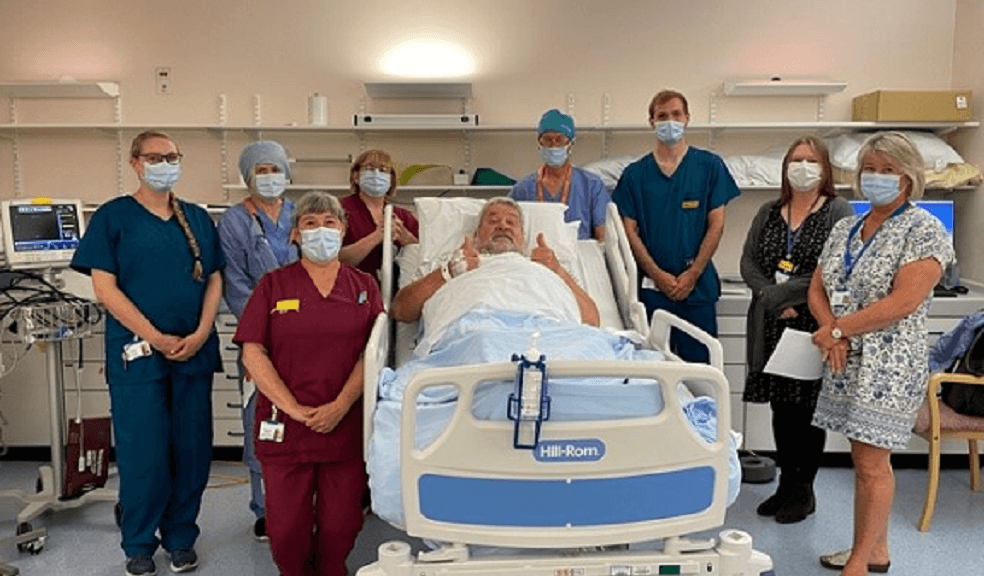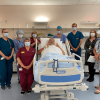
FORCE and RD&E mark prostate cancer treatment milestone
FORCE Cancer Charity and the Royal Devon and Exeter Hospital’s Radiotherapy Department have celebrated a milestone in the treatment of prostate cancer.
The hospital has treated its 1,000th patient with high dose-rate brachytherapy, using equipment bought by FORCE.
Bill Collings received his therapy at the RD&E’s Wonford unit.
The treatment is also known as HDR brachytherapy or temporary brachytherapy.
It is a type of internal radiotherapy that involves inserting thin tubes into the prostate gland.
A source of radiation is then passed down the tubes into the prostate for a few minutes to destroy cancer cells.
The source of radiation is then removed, so no radiation is left in the body.
Because the radiation is put directly into the prostate, the healthy tissue nearby gets a smaller dose of radiation.
This means healthy tissue is less likely to be damaged.
FORCE bought the first and second Selectron brachytherapy machines in use at the RD&E.
The charity also paid for Brachytherapy Planning Equipment.
This type of treatment is mainly used to treat cancers in the prostate gland, cervix and womb but it may also be used to treat some other cancers, such as head and neck cancers.
In 1986 the RD&E was the first in the world to put an advanced type of Selectron machine into use, driven by pioneering FORCE founder Dr Chris Rowland and his colleagues.
In 2004 Dr Anna Lydon (Consultant Clinical Oncologist) set up the brachytherapy service for prostate patients along with Mr Malcolm Crundwell, Consultant Surgeon Urology Special.
Pictured (left to right): Lauren Rowberry (Lead Brachytherapy Clinical Scientist), Dr Anna Lydon (Consultant Clinical Oncologist), Charlie Trewin (Brachytherapy Superintendent Radiographer), Fiona Bond (Senior Brachytherapy Radiographer), Bill Collings (patient), Andy Swaine (Assistant Anaesthetic Practitioner), Will Crede (Clinical Scientist), Helen Slaney (Radiotherapy Services Manager) and Meriel Fishwick (FORCE Cancer Charity CEO).

















